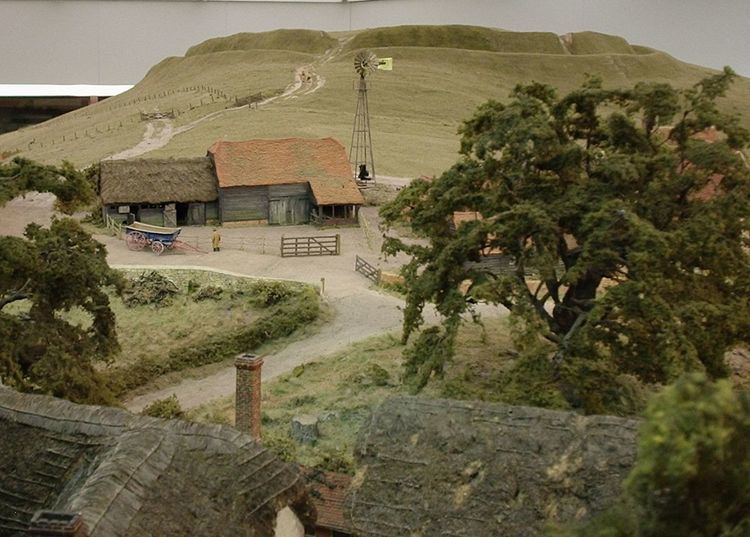Phone +44 1865 408143 | ||
 | ||
Hours Open today · 11AM–4PMSunday11AM–4PMMondayClosedTuesdayClosedWednesdayClosedThursdayClosedFridayClosedSaturday11AM–4PMSuggest an edit Similar Didcot Railway Centre, Museum of Oxford, Oxford Bus Museum, Abbey Meadows, The Oxfordshire Museum | ||
Time travel with pendon museum s outstanding model railways
Pendon Museum, located in Long Wittenham near Didcot, Oxfordshire, England, is a museum that displays scale models, in particular an extremely large scene representing parts of the Vale of White Horse in the 1920s and 1930s. The scene, under construction since the 1950s and with parts dating back earlier, was inspired by extremely detailed research into the architecture and landscape of the vale, with some models of cottages taking hundreds of hours to complete. Founded by the late Roye England, the museum is run by a group of volunteers and is open to the public most weekends and holidays.
Contents
- Time travel with pendon museum s outstanding model railways
- Pendon museum 11 03 2016
- History
- Vale of White Horse
- Dartmoor branch
- Madder Valley
- Models
- Location
- References
Pendon museum 11 03 2016
History
The museum was founded by the artist and craftsman Roye England, who was interested in model railways. He observed the destruction and modification of many historic buildings in the area and began to make model representations of them.
Both the main Vale scene and others display working scale model railway scale models of typical scenes on the Great Western Railway (GWR) of the 1920s. The trains are also representative in detail of those travelling that line in those years.
It is not a 'model railway layout' in its usual sense as the trains run at scale speed with a realistic interval between each.
Vale of White Horse
The main display and ongoing project at Pendon is a scale representation of the Vale of White Horse as it was in the inter-war period. The scene is centred on the 'typical' village of Pendon Parva, which is served by a railway station on the main London to Bristol GWR main line that runs through the Vale, and another on the M&SWJR that became one of the constituent companies of the GWR in 1923. The topography and the village layout is fictional, but every building and significant feature is an exact model of a real building from the Vale of White Horse.
Some locos on the layout:
Dartmoor branch
On the ground floor of the museum a model representing a Great Western Railway branch line on Dartmoor, originally built in 1955 to showcase the trains being built for the Vale scene, is operated for visitors. The main focus of the Dartmoor scene is a model of Brunel's timber viaduct at Walkham in Devon built by R. Guy Williams, who also built many of the model locomotives at the museum.
Locos on the layout include:
Madder Valley
The museum includes displays of individual models, modelling methods and railway artefacts. The museum also displays Madder Valley, a pioneering model railway built by John Ahern.
Models
The model trains are hand built, to represent individual locomotives, carriages, and wagons as exactly possible, based on surviving records and photographs. Operation consists of a sequence of trains, showing what one could have seen passing by on a summer day and night, in the mid-1920s. This sequence is based on timetables of the period. They are all modelled in 4 mm to 1 foot scale (1:76), and run on track of 18mm gauge, a combination known as EM gauge.
Location
The museum is located at Ordnance Survey mapping six-figure grid reference SU542935.
